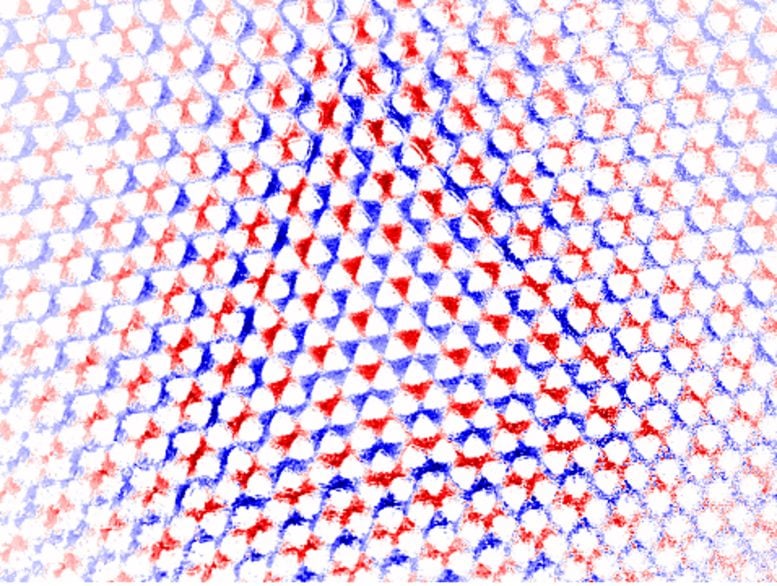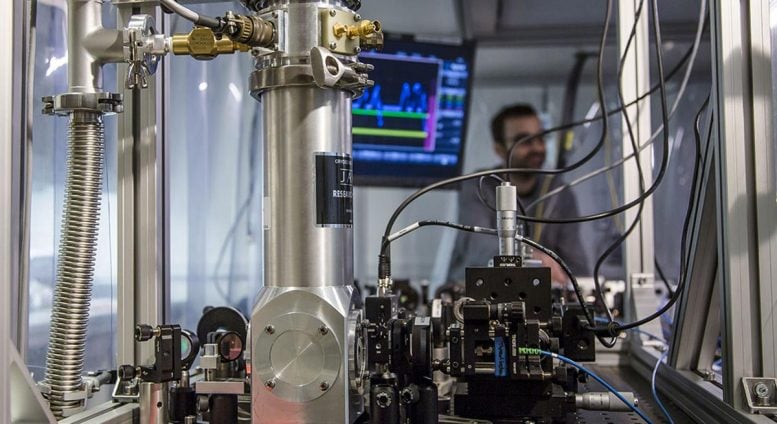
When a drummer hits a drum, the surface vibrates and creates sound—a signal we recognize as music. But once those vibrations stop, the signal disappears. Now imagine a drumhead that’s incredibly thin, only about 10 millimeters wide, and covered in tiny triangular holes. Scientists have created exactly that, and it does something extraordinary.
Researchers at the Niels Bohr Institute in Copenhagen, working with teams from the University of Konstanz and ETH Zurich, discovered that vibrations can travel through this miniature membrane with barely any energy loss. In fact, the vibrations move more cleanly than signals in even the most advanced electronic circuits. This breakthrough, recently published in Nature, opens up new possibilities for how we transmit sound and information, especially in the race toward powerful new quantum technologies.
Phonons – Sound Signals or Vibrations That Spread Through a Solid Material
Instead of using electricity, this research focuses on phonons—tiny vibrations that travel through solid materials. You can think of them as sound waves moving through a crystal or a drumhead. When atoms vibrate, they nudge neighboring atoms, creating a wave of motion that carries information.
If that wave weakens along the way or gets scrambled by heat or disorder, the message becomes more challenging—or impossible—to recover.
System Reliability is Crucial
What makes this new membrane so exciting is how little signal is lost. Researchers found that vibrations could move through it with extraordinary efficiency. In fact, the signal loss was almost nonexistent.
Even when the vibrations had to curve around holes in the membrane or change direction, only about one phonon out of a million went missing. That’s far better than what we see in electronic circuits, where signals typically weaken a hundred thousand times faster.
This level of precision could make the membrane a powerful new tool for transferring information in everything from quantum computers to high-precision sensors.

Basic Research with Perspectives
Researchers at the Niels Bohr Institute, Assistant Professor Xiang Xi and Professor Albert Schliesser, explain that the result should not be thought of in a specific, future application – but there are still rich possibilities. Currently, there is a global effort to build a quantum computer, which is dependent on super-precise transfer of signals between its different parts.
Another field within quantum research deals with sensors that, for example, can measure the smallest biological fluctuations in our own body – here too, signal transfer is crucial.
But Xiang Xi and Albert Schliesser are currently most interested in exploring the possibilities even further.
“Right now, we want to experiment with the method to see what we can do with it. For example, we want to build more complex structures and see how we can get phonons to move around them, or build structures where we get phonons to collide like cars at an intersection. This will give us a better understanding of what is ultimately possible and what new applications there are,” says Albert Schliesser. As they say: “Basic research is about producing new knowledge.”
Explore Further: “Trampoline” Smaller Than a Human Hair Could Rewrite the Rules of Microchip Design
Reference: “A soft-clamped topological waveguide for phonons” by Xiang Xi, Ilia Chernobrovkin, Jan Košata, Mads B. Kristensen, Eric Langman, Anders S. Sørensen, Oded Zilberberg and Albert Schliesser, 4 June 2025, Nature.
DOI: 10.1038/s41586-025-09092-x
Never miss a breakthrough: Join the SciTechDaily newsletter.
